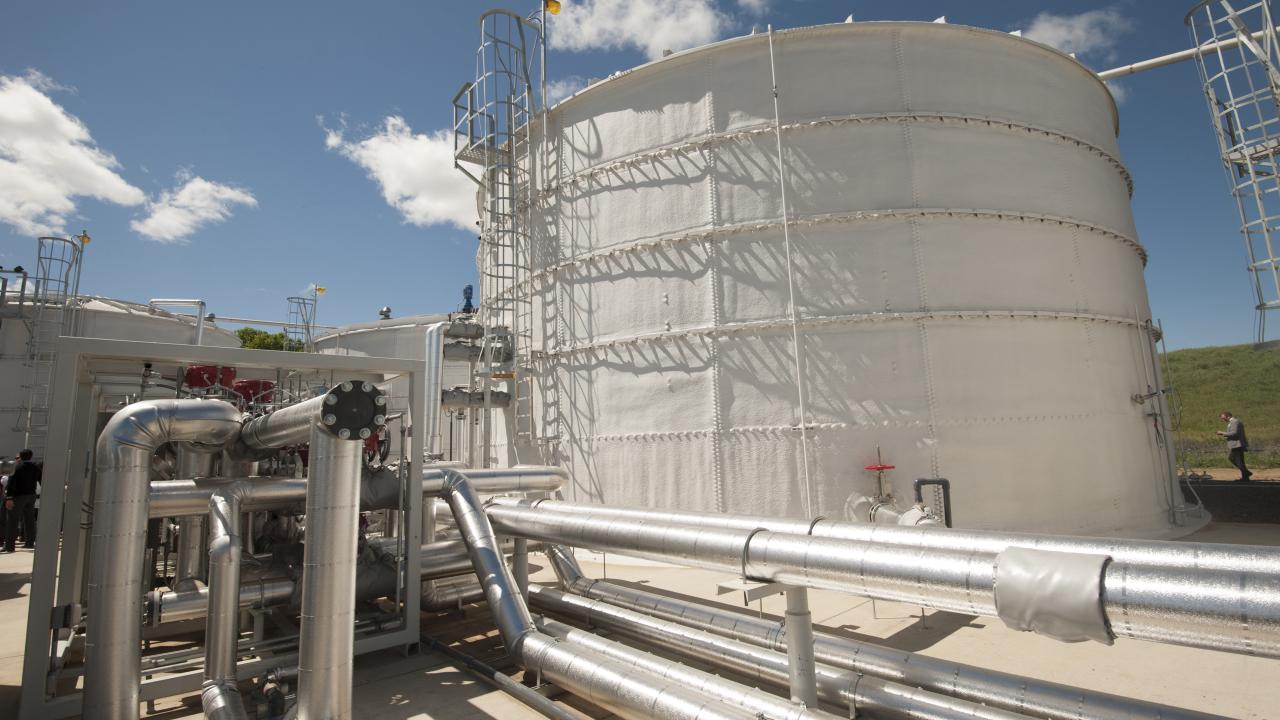As California works to meet climate and air quality goals, a key to the transition will come from biomass, which is renewable organic material from plants and animals.
New research from the University of California, Davis, published in the journal Global Change Biology Bioenergy, examines the good and bad uses of biomass and the best pathways to meet California’s goal of reducing carbon dioxide emissions by 85% of 1990 levels by 2045.
“California is fortunate in having a large biomass resource,” said lead author Peter Freer-Smith, an adjunct professor in the Department of Plant Sciences. “Finding the best use of biomass remains challenging, and this study outlines future scenarios for effective use.”
Not all biomass is equal
California’s biomass resources are vast and widespread across the state, with as much as 54 million dry tons available each year. This comes mostly from forests and wildlands, municipal solid waste, animal manure and crop residues such as material left over from harvest.
But use of this biomass is controversial, and not all biomass is equal. Using this resource effectively to produce energy, as well as minimize greenhouse gas emissions and air pollution is key to a sustainable future for California.
Policymakers, planners and others working to reduce waste streams and pollutants should use the study as a resource, said Freer-Smith.
“Using this information, we can take action to ensure that biomass is used effectively in California,” he said. “If you’ve got a bad use, then you can use biomass in a different way, or you can change the technology so that you address the problems associated with that use. Also, some biomass is waste, so we have to get rid of it, and we might as well do something sensible with it.”
Freer-Smith and other researchers examined more than 400 papers written from 2005 to 2022 about biomass use in California and cataloged the effects on emissions.
Choosing the right path for biomass
The paper finds that there are 34 pathways that either help reduce greenhouse gases or specific air pollutants, and 14 that achieve reductions in both categories. Conversely, 13 pathways — including wildfires, the open burning of biomass and other uses — increase harmful emissions.
Good uses of biomass include combustion to generate renewable energy, producing biodiesel and converting wastes to biogas. Anaerobic digesters, which break down biodegradable materials into energy, have positive effects when it comes to converting agricultural, livestock, food and water waste.
Bad pathways include fires, open composting of animal manure and disposal of municipal solid waste without production of landfill gas. Wildfires have among the most negative effects.
Burning of forest material, such as for prescribed burns, and crop byproducts is also detrimental.
“It would be a lot better to take that down to the power station and burn it to create energy,” Freer-Smith said. “Even burning biomass in power stations is better for climate policy, and it’s better for air quality relative to burning on site.”
The paper also finds that new, innovative pathways are being developed to replace fossil fuels, meet climate objectives and contribute to the bioeconomy.
“It’s best to use biomass for renewable energy or for generating electricity where combustion is controlled and carbon capture becomes a possibility — so it’s better for climate policy and for air quality relative to burning on site,” said Freer-Smith. “Similarly, it’s important to get prescribed burning of forest biomass right.”
Jack H. Bailey-Bale, Caspar L. Donnison and Gail Taylor from the UC Davis Department of Plant Sciences contributed to the research.
Funding for the preliminary analysis came from the California Air Resources Board. The John B. Orr Endowment in Environmental Plant Sciences and the Center for Bioenergy Innovation at Oak Ridge National Laboratory also supported the research.
Media Resources
Media Contacts:
- Peter Freer-Smith, Department of Plant Sciences, pfreersmith@ucdavis.edu
- Emily C. Dooley, College of Agricultural and Environmental Sciences, ecdooley@ucdavis.edu
- Kat Kerlin, UC Davis News and Media Relations, 530-750-9195, kekerlin@ucdavis.edu
